Products

Japanese Knives
The main features of Japanese knives are that they are single-edged and use steel. Because of these features, they have a very sharp edge. With this, they can create a beautiful cut surface and the cells of food do not get damaged thereby maximizing the flavor of food.
-
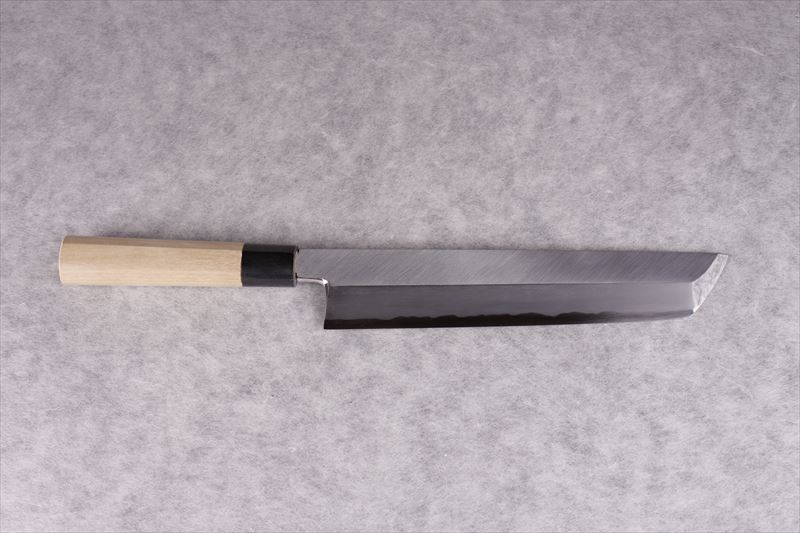
Special KnivesHonekiri/Hamokiri (Daggertooth Pike Conger Knife)
To clean daggertooth pike conger that is full of fine bones, the knife is made heavy by making the mine (spine) thick. On the other hand, the knife's hasaki (edge) is made thin so that it can finely cut bones.
-
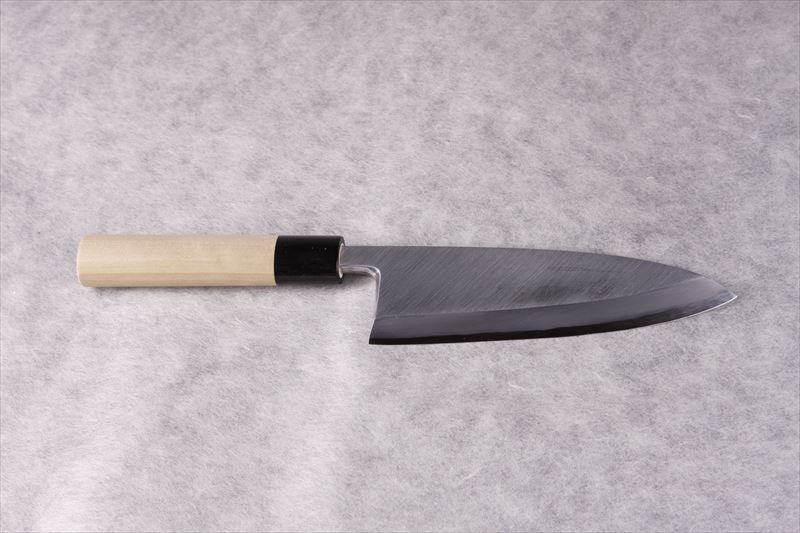
For Cleaning FishDeba
Generally, the bottom 2/5 of the edge is used for chopping and top 3/5 is used for cleaning fish. Depending on the length of the knife, it is used for large fish like Japanese amberjack and bonito or for small fish like horse mackerel. You can cut a fish, bones and all, by using its weight.
-
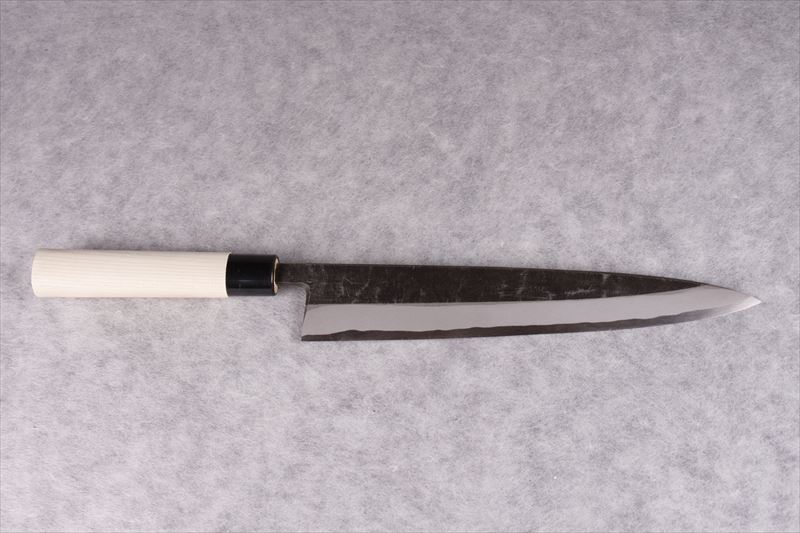
For Cleaning FishMioroshi
It is a knife like a cross between a sashimi knife and a deba knife, and is commonly used at the fish market. The blade is long and is thicker than shobu but thinner than deba.
-
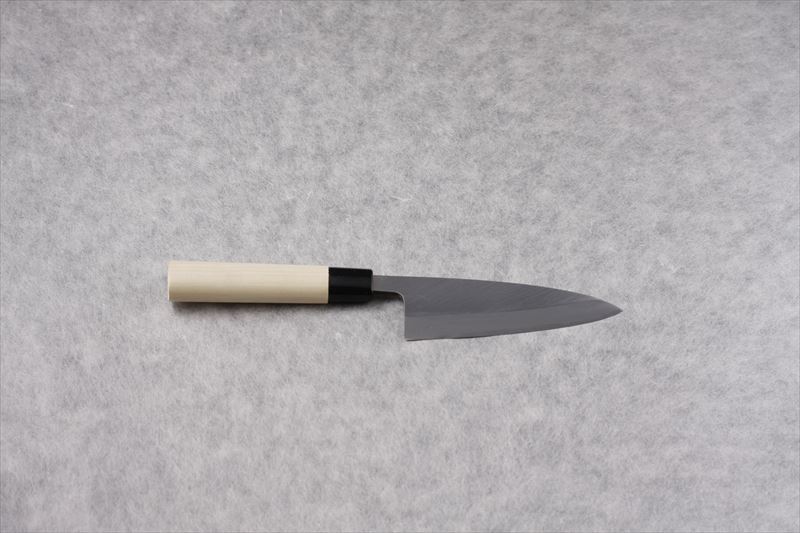
For Cleaning FishAjisaki
It is thinner than a deba knife and is used to clean horse mackerel. Usually, it is sold in lengths of 90 mm to 120 mm. Besides migaki (*), kurouchi (**) is also popular.
*A knife that is silver overall like you see frequently, by polishing the "ji" (the base of the knife made by smiths).
**A knife with the kireha part polished while leaving the obverse side of the "ji" black. -
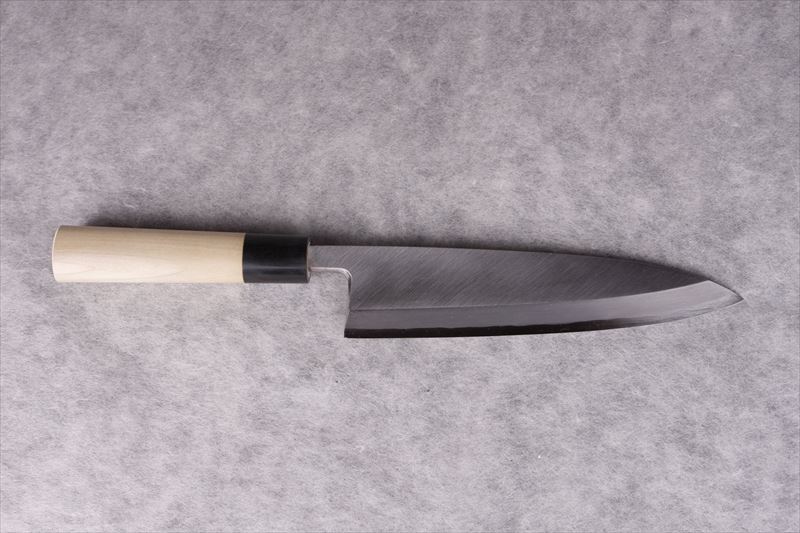
For Cleaning FishAideba
A deba knife made thinner which is usually used by people who feel deba is too heavy. Because it is thinner, it is easier to chip than deba.
-
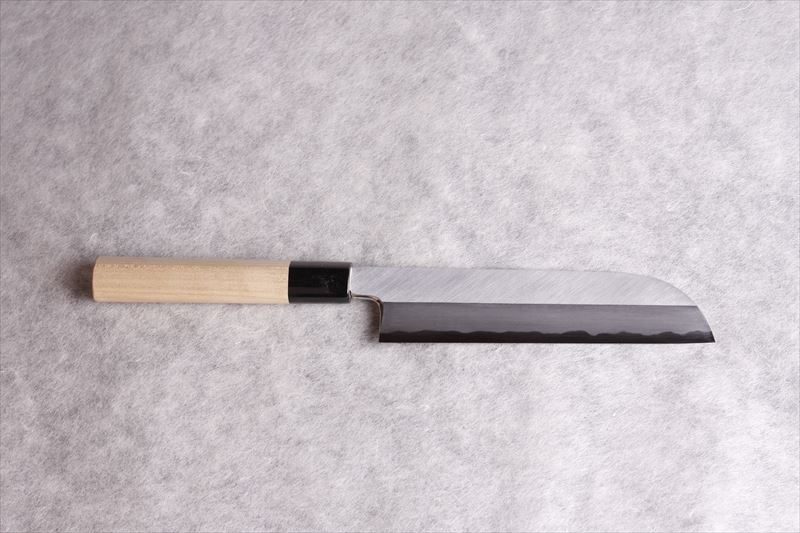
For VegetablesKamausuba
This is a Kansai-style usuba knife, defined by its round kissaki (point). The heel is used to strip off skin, the middle part is used to peel skin and bevel edges, and the tip is used to make decorative cuts.


